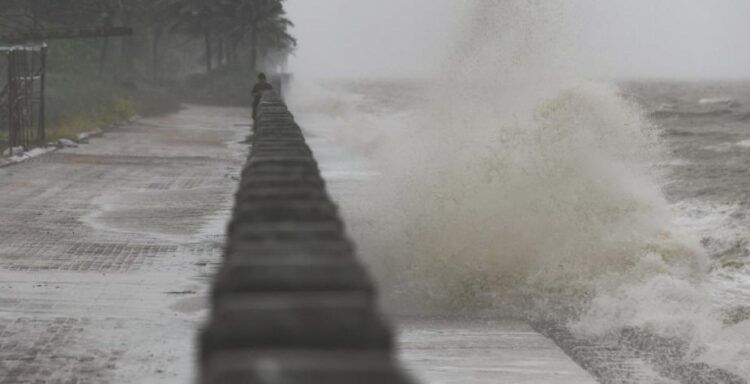Beijing: China’s National Meteorological Centre (NMC) on Wednesday renewed the second highest orange alert for Doksuri, as the fifth typhoon of this year, which is expected to bring gales and heavy rain to the southern and eastern parts of the country.
The typhoon, observed over the ocean about 350 km south of Taiwan at 5 a.m. on Wednesday, is expected to move northwest at a speed of 10 to 15 km per hour, Xinhua news agency quoted the NMC as saying in its latest update.
It will enter the northeastern part of the South China Sea between Wednesday evening and Thursday morning and then make landfall in coastal areas of Fujian and Guangdong on Friday morning, the Centre said.
Some coastal areas around the Bashi Channel, the South China Sea, the Taiwan Strait, as well as coastal regions of Taiwan and Fujian, will experience gales, while parts of Taiwan will experience heavy downpours of 250 to 350 mm from Wednesday morning to Thursday morning, according to the NMC.
The Center has issued an advisory suspending both indoor and outdoor gatherings, as well as dangerous outdoor operations, and recommended the timely transfer of people living in vulnerable housing.
It has also called for emergency typhoon preparations and precautions against possible geological disasters.
Also on Wednesday, the NMC renewed a blue alert for rainstorms.
From 8 a.m. Wednesday to 8 a.m. Thursday, heavy rain or rainstorms are forecast to hit parts of Qinghai, Jiangsu, Shandong, Zhejiang, Fujian, Sichuan, Guizhou, and Taiwan.
Some of these regions will experience heavy rainfall, with 20 mm to over 80 mm of hourly precipitation, as well as severe convective weather conditions such as thunderstorms and gales, the Center said.
It has advised local governments and residents to take appropriate precautions.
Schools and kindergartens have been asked to ensure the safety of students and children, while drivers have been advised to be alert and cautious due to road waterlogging and traffic jams.
China has a four-tier weather warning system, with red representing the most severe warning, followed by orange, yellow and blue.
(IANS)
















